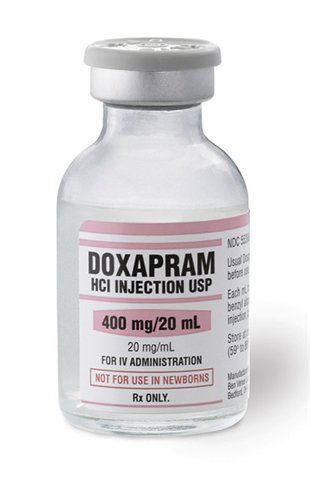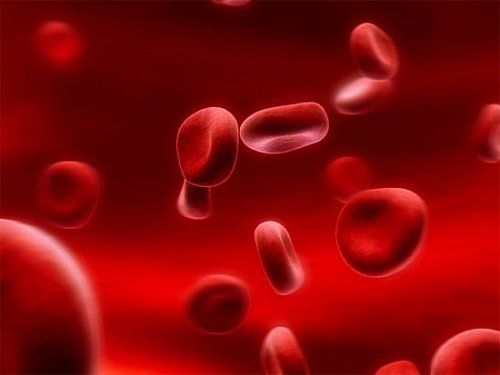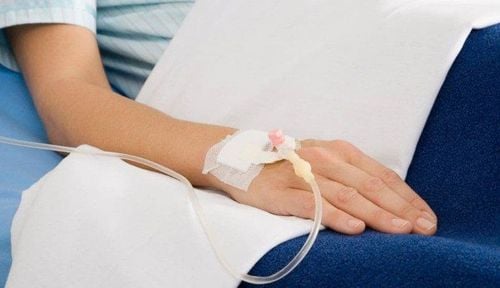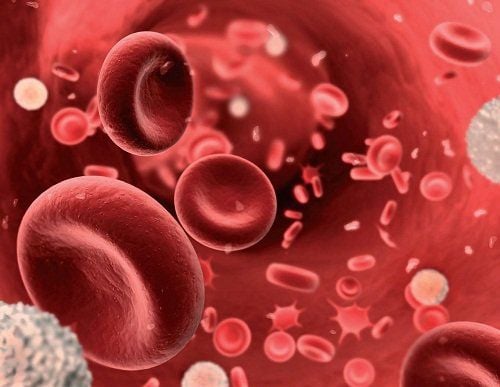This is an automatically translated article.
An arterial blood gas test provides information on important parameters such as arterial oxygen pressure (PaO2), arterial blood CO2 pressure (PaCO2), and inhaled oxygen concentration (FiO2). These values contribute to the diagnosis of acid-base balance disorders and respiratory failure.1. What is an arterial blood gas test?
Red blood cells are responsible for transporting O2 and CO2 blood gases throughout the body. Based on the balance of oxygen, carbon dioxide and acid-base balance (pH) can help suggest the presence of diseases, especially cardiovascular, lung, and kidney diseases.An arterial blood gas (ABG) test is a test that provides information about the pH, pressure, oxygen and CO2 levels in the arterial blood. Blood gas testing helps diagnose acid-base disorders and respiratory failure. Therefore, it is an important test in critical illness departments such as the intensive care unit (IPU).
Unlike other common blood samples taken from a vein, blood used for blood gas testing is taken from an artery in the body.
2. PaO2, PaCO2 and FiO2 index in arterial blood gas test
2.1 PaO2 (arterial blood oxygen pressure) The PaO2 index of an adult is in the range of 85 - 100 mmHg, accounting for 95 - 98% of the total amount of oxygen in the blood. PaO2 increases in case of increased alveolar blood partial pressure O2. PaO2 is decreased in cases of hypoventilation, decreased diffusion, and an imbalance in the Va/Q ratio (ventilation/blood flow). The dissolved oxygen molecules in the plasma (i.e., not bound to hemoglobin) are called are free oxygen molecules. The collision between free O2 molecules is called the partial pressure of oxygen.If the sample is arterial blood, then the reading is PaO2. Because PaO2 reflects only the free dissolved oxygen molecules in the plasma and not the cells associated with hemoglobin, it is not possible to indicate the oxygen content of the blood. Some dissolved oxygen exists in the plasma phase, so PaO2 is determined by alveolar PO2 and lung structure and is not related to hemoglobin. Oxygen molecules passing through the thin capillary cell membrane enter the plasma phase as releasing molecules, rapidly entering red blood cells and binding to hemoglobin.
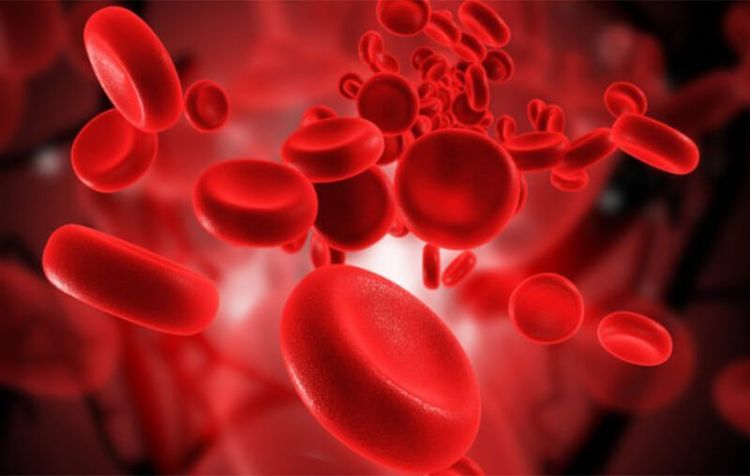
Chỉ số PaO2 của người trưởng thành nằm trong khoảng 85 - 100 mmHg, chiếm 95 - 98% tổng lượng oxy có trong máu
Alveolar ventilation and alveolar perfusion Qc Amount of CO2 present in mixed venous blood Thanks to the gas analyzer, PaCO2 is measured directly in arterial blood. The normal range of PaCO2 is between 30 and 50 mmHg. PaCO2 index does not depend on age. The amount of PaCO2 decreases when the patient is anxious, afraid or standing at an altitude above 2500m.
2.3 FiO2 (concentration of oxygen in inhaled air) FiO2 is the term for the percentage of oxygen in the measured volume. This index is often used in medicine to indicate the percentage of oxygen participating in gas exchange. When the gas pressure changes, the fraction of the inhaled oxygen will remain constant and the partial pressure of the oxygen will change with the pressure of the gas volume.
In natural air, the oxygen composition accounts for 20.9%, equivalent to the FiO2 value of 0.209. FiO2 is usually maintained at <0.5 even with ventilators, to avoid oxygen toxicity. Patients with dyspnea often breathe gas rich in oxygen, with FiO2 higher than normal. Specifically, it will increase about 4% of the amount of oxygen in 1 liter of oxygen through the nasal tube.
3. Application of PaO2, PaCO2, FiO2 indicators in blood gas testing
3.1 Assessment of oxygen saturation The ratio of PaO2 to the oxygen concentration in the inhaled air FiO2 (PaO2/FiO2) is an indicator used to determine the presence and severity of alveolar gas exchange disorders. A healthy person is estimated to have a P/F ratio > 350 (80mmHg/0.21), a lower value indicating impaired gas exchange. Patients with acute lung injury or acute respiratory distress syndrome (ARDS) will have P/F values < 300 and < 200, respectively, in combination with other diagnostic criteria for diagnosis.For the patient on oxygen, the patient's PaO2 <80 mmHg, below normal suggests a severe disorder of oxygen supply, most likely due to an intrapulmonary shunt. Intrapulmonary shunt occurs when the lung is perfused without ventilation, such as after atelectasis, pulmonary coagulation, alveolar drainage, or acute pneumonitis. In the calculation of the P/F ratio, the oxygen concentration in the inhaled air is determined by the Venturi mask. Oxygen saturation (SpO2) using a standard pulse rate may give erroneous results. Oxygen saturation is artificially increased in the case of CO poisoning (due to carboxyhemoglobin production) and methemoglobinemia caused by various drugs or poisoning, including nitrates, some local anesthetics sets and sulfonamide antibiotics.
3.2 Assessment of partial pressure CO2 (PaCO2) PaCO2 is used to identify changes in the ventilation component in acid-base disorders. An increase in PaCO2 contributes to acidosis and a decrease in PaCO2 leads to alkalosis. In a patient whose PaCO2 is not elevated, this indicates that the acidosis is not of respiratory origin. If the respiratory apparatus is normal, compensation will reduce CO2. Where PaCO2 is in the upper limit, it indicates that the ventilatory response is inadequate. Causes may be due to use of the painkiller morphine, chronic obstructive pulmonary disease, decreased respiratory rate or respiratory failure.
However, the presence of a normal PaO2 value does not rule out respiratory failure, especially in patients receiving oxygen. A higher than expected PaCO2 value is a more sensitive indicator of respiratory failure than a PaO2 value, especially during oxygenation, as it is strongly related to the depth and rate of respiration.
4. When should you do an arterial blood gas test?
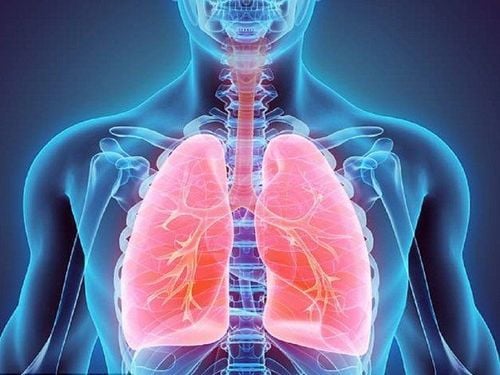
Xét nghiệm phân tích khí máu động mạch được chỉ định trong trường hợp bác sĩ nghi ngờ bạn đang gặp các bất thường ở phổi
An arterial blood gas analysis is indicated in case your doctor suspects that you are experiencing abnormalities:
Lung disease Kidney disease Metabolic and metabolic disease Affected head or neck trauma to respiratory function Tests are also done with young children, especially those with difficulty breathing. The blood gas test is taken from the baby's umbilical cord blood, based on that to find potential respiratory disorders, evaluate the acid-base status, thereby giving timely and effective treatment measures.
Vinmec International General Hospital is one of the hospitals that not only ensures professional quality with a team of leading medical doctors, modern equipment and technology, but also stands out for its examination and consultation services. comprehensive and professional medical consultation and treatment; civilized, polite, safe and sterile medical examination and treatment space. Customers when choosing to perform tests here can be completely assured of the accuracy of test results.
Please dial HOTLINE for more information or register for an appointment HERE. Download MyVinmec app to make appointments faster and to manage your bookings easily.




